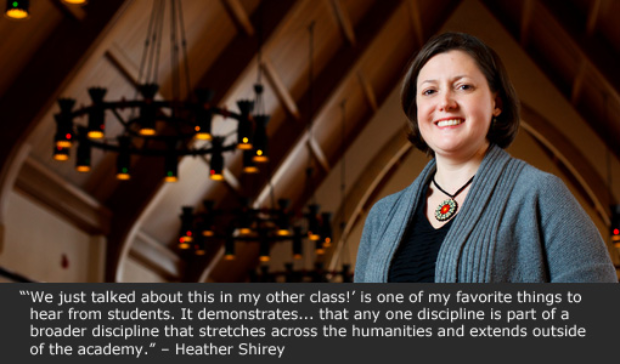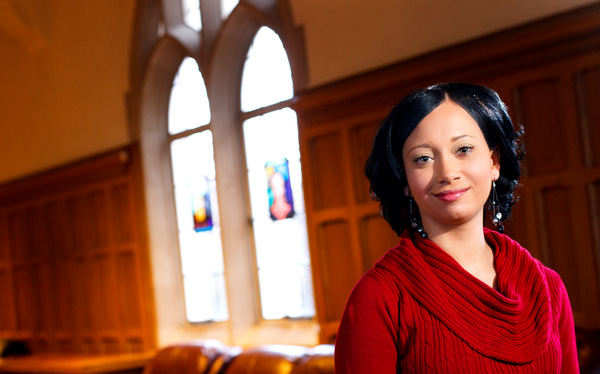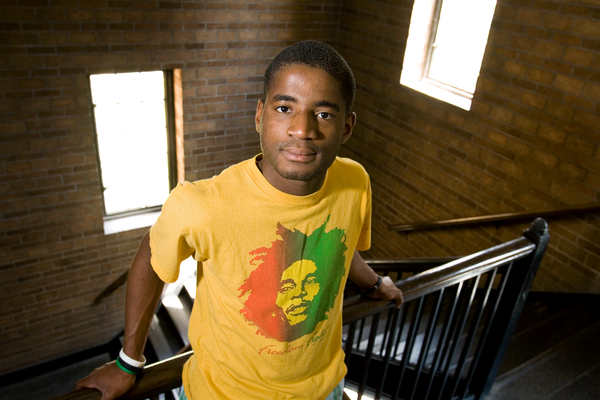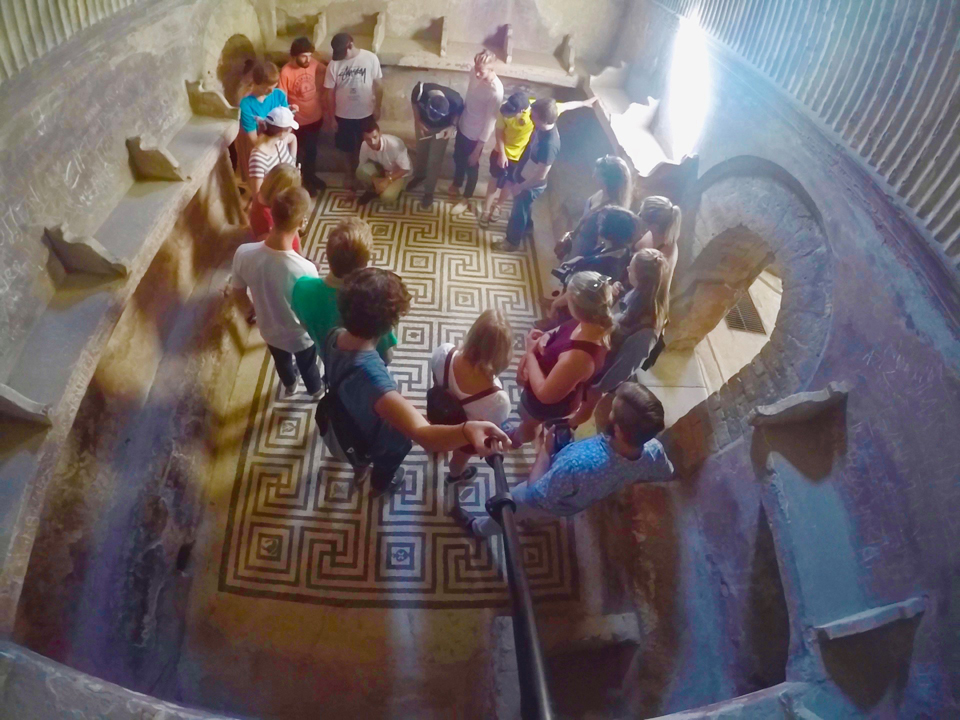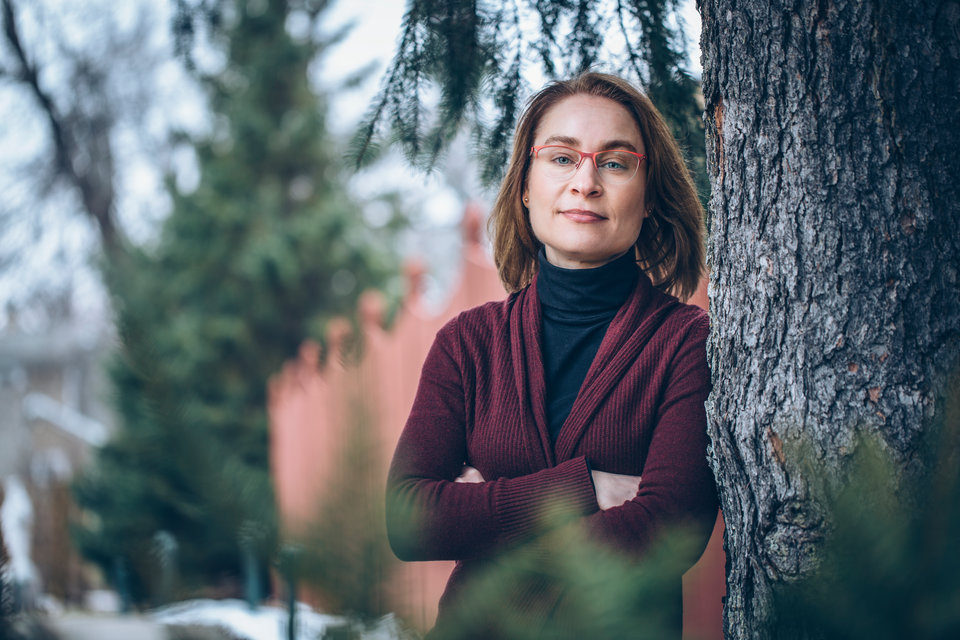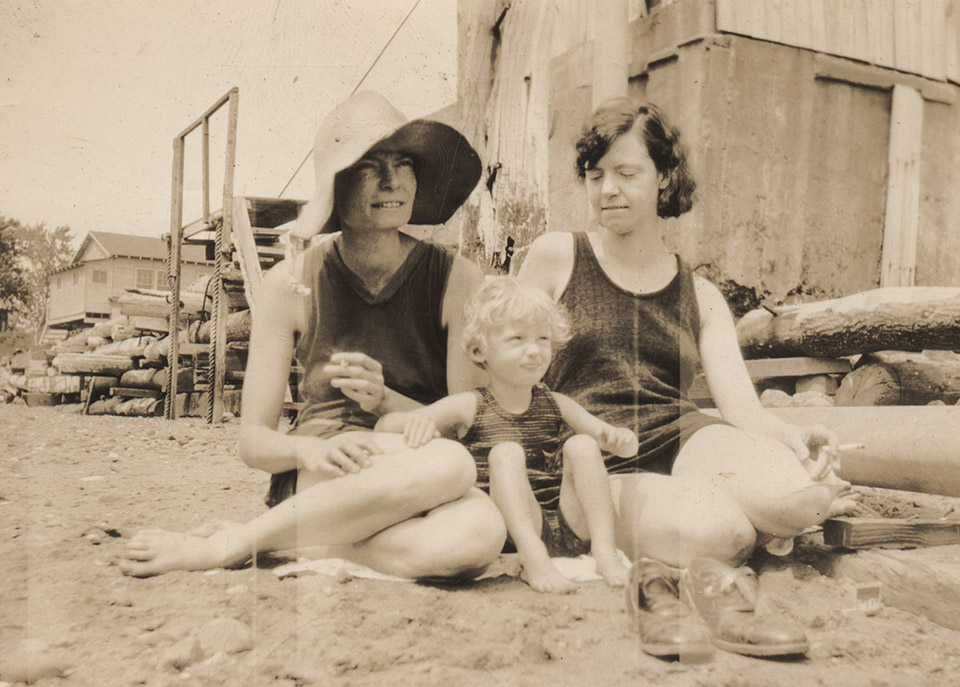As director of the minor in American Culture and Difference (ACD), I often am asked about the program’s title. I have many answers to this question, but I often respond with another question: “How quickly,” I ask, “can you define the terms in the title?” The ensuing conversations are revealing: Although at face value, “American,” “Culture,” and “Difference” quite simply designate a national identity, a range of communication, and a recognition of human diversity (respectively), what emerges from these conversations is a realization that these terms actually mean different things to different people. Further, any thoughtful discussion of the terms leads to an understanding that they are open to constant redefinition and reinterpretation. This fluidity shapes the contours of the minor: Its courses, while rooted in the scholarly rubrics of specific disciplines, also allow students to develop cross-disciplinary understanding, in part by engaging in critical debate about these terms.
The American Culture and Difference minor, originally known as American Cultural Studies, was introduced in 1998 through the efforts of a group of faculty led by professor Bill Banfield of the Music Department. Among this initial group were colleagues from across the disciplines, including professors Bernard Armada (Communication and Journalism), Christopher Kachian (Music), Paul Lorah (Geography), Steven Lybrand (Sociology), Andrew Scheiber (English), and me (English).
These faculty members created a minor that consisted of a mandatory course in the Foundations of Cultural Studies and five other elective courses across the disciplines. These courses were offered in three prescribed areas: 1) history, sociology and politics; 2) literature and the arts; and 3) mass culture, pop culture and communication media. To ensure that students would have as wide an interdisciplinary education as possible, the curriculum was designed so that they would select courses from all three areas and take no more than two courses from a single department.
Under Banfield’s direction, the minor gained visibility and coherence, especially with visiting keynote speakers such as professors Henry Louis Gates Jr. and John Wright, and with faculty workshops and sessions designed to articulate a critical pedagogy for American Cultural Studies classes. Within the first few years, several dozen studentsminored in the program. They came to us from various disciplines: art history, communication and journalism, English, history, justice and peace studies, and political science, to name a few. Even in these early years, students were actively engaged in the minor, with some presenting their work at national conferences.
In 2005, Banfield departed for the Berklee School of Music. At this point, I was appointed interim director for a year by Dean Tom Connery, and then professor Todd Lawrence (English) took the reins for another year while I was on sabbatical. During this period of transition, particularly in the spring and summer of 2007, the minor wasrevised by a faculty group comprised of professors Lawrence, Kachian, Buffy Smith (Sociology and Criminal Justice), and me, with the support of Marisa Kelly, who was then dean. This revision articulated “difference” as a crucial component of the minor.
The Word ‘Difference’ Kelly and the faculty thought that even as the minor introduced students to the broad swath of American culture, it was important to distinguish our minor from cultural studies and American studies programs at other universities. We wanted to highlight the experiences and struggles of communities that have been historically marginalized because of their class, gender, racial or sexual identities. This emphasis, we believed, also would fit in with our university’s commitment to cultural diversity. However, rather than using the more popular term “diversity” to represent our emphasis on marginal cultures, we felt that “difference” offered a more nuanced understanding of cultural complexity, acknowledging the myriad ways in which courses in the minor interrogated homogenous notions of American culture. The goal of the minor was both to re-examine and to reread epresentations of mainstream American culture, as well as the productions of alternative and oppositional cultures. Fundamentally, we wanted to position American Culture and Difference as an interdisciplinary minor that offered students a critical perspective on the diversity of “American culture.”
In its present formation, then, the minor provides the opportunity for students to experience the benefits of a truly interdisciplinary education. Students are encouraged not only to make connections among disciplines but also to engage in complex analyses: They are asked to explore links and tensions between vernacular and elite culture, as well as to examine connections and conflicts among multiple cultural identities and affiliations. Drawing from a range of participating departments, the minor explores the full range of symbols, mythologies, practices and histories that contribute to the complexity and diversity of the American experience. Students consider ways inwhich music, film, advertisements, folklore, literature, television and art shape daily life in the United States, form cultural and national identity, construct racial and ethnic identity, and create a sense of “high” and “low” culture.
Indeed, this attempt to break down the traditional boundaries of the high and low is a formative feature of the minor. In the cultural studies tradition, all forms of cultural work offer ways to understand elements of a social formation. Oftentimes, the criticism of this approach involves questions of value. One might inquire, “Surely there is more value in analyzing a Toni Morrison novel than there is in exploring an episode of HBO’s “The Wire”? Yet value is contextual, residing in our reading of a text – our critical analysis of it – not merely in some frozen, timeless version of that text. In the aboveexample, both narratives have fundamental things to say about our world and offer points of illumination that are relevant to our understanding of, say, power formations and their evolution within certain social contexts.
More generally, courses in the minor pose critical and thoughtful questions about the way our world works through the production, circulation and consumption of cultural texts. How, for instance, are certain notions about femininity constructed through 50 years of Disney films? How can we read a 9/11 memorial or an Oklahoma City memorial as a comment on the nature of American democracy? Why did Andy Warhol’s paintings of soup cans change the definition of art? Why is Martin Luther King Jr. celebrated as a national hero, but not Malcolm X or Huey P. Newton?
The minor in American Culture and Difference lays the intellectual groundwork for helping students to explore such questions even while they are themselves immersed in the social and political history of American culture. This process of critical engagementwith everyday culture, along with an in-depth study of historical and political documents, helps students develop valuable critical thinking skills, enabling them to analyze the diverse texts that make up our world.
And because the minor provides a window into a wide array of American experiences and lives, focusing especially on historically marginalized communities, students also can find themselves rethinking mainstream appraisals of American culture. In American Culture and Difference courses, they are encouraged to ask new questions in new ways, challenging social, cultural and political assumptions that often are thought of as “common sense.” Ideally, then, this is a minor that attempts to connect the reading and research students do in the classroom with the world that surrounds them.
"The minor has given me the opportunity to have conversations with people who are different from myself about the issues in the world that matter the most, such as inequalities between races and genders in society." - Shanea Turner-Smith '14
Professional Paths In the last several years, our students have chosen an array of professional paths and have spoken about the continuing influence of the minor on their careers and on their attempts to make meaningful contributions to society. Ben Nebo, who graduated from St. Thomas in 2008 and is continuing his studies at the Monterey Institute of International Studies as a Master of Public Administration candidate, is concentrating in International Management and Mandarin Chinese. Nebo recently observed that “the analytical skills taught in all ACD courses enabled [him] to excel at graduate-level research.” According to Nebo, his “understanding of American history, folklore and myth-narratives proved indispensible when [he] served as a Peace Corps volunteer promoting mutual understanding in Malawi. The interpersonal and crosscultural communication skills taught in American Culture and Difference also came in handy when advising Malawian social change organizations engaged in HIV impact mitigation.” As a recently returned Peace Corps volunteer, Nebo trusts that the “critical thinking and writing skills [he] honed as an American Culture and Difference minor will enable [him] to satisfy the Monterey Institute’s graduation portfolio requirements.”
Nebo’s eclectic interests and his desire to connect the work he did in the minor with his vocation are echoed by current minors, Shanea Turner-Smith ’14 and Theresa Malloy ’13. Turner-Smith has suggested that the American Culture and Difference minor provides a unique and valuable learning experience. The minor, in her words, has given her “the opportunity to have conversations with people who are different from myself about the issues in the world that matter the most, such as inequalities between races and genders in society, and the wealthy versus the poor.” As a major in social work,Turner-Smith feels that classes in the minor have given her knowledge of other cultures, as well as the “skills to be more open minded and a better-rounded person when it comes to understanding the injustices in society.” Turner-Smith concludes that she would like to “think of [her] knowledge as a collage that is forming with open holes so that [she] can always add to [it] and allow different perspectives to shape [her] ideas. …”
Malloy, a junior, took the American Culture and Difference Foundations class as a first-year student. She recalls the class as “probably the most diverse one” she has taken at St. Thomas and asserts that the “provocative conversations” from that class have stayed with her. Subsequently, Malloy notes, the minor has enhanced her work in her major area of study, communication and journalism (COJO). As a COJO student, she finds herself constantly immersing herself in the lives of others and sharing their stories. Malloy says that she has “learned to listen, respect and appreciate” a range of American cultural voices because of the minor. Moreover, because the minor is interdisciplinary, it enriches her learning experiences across the liberal arts curriculum. She hopes that after graduating she will use the skills acquired in these classes to “produce stories that are not always reported and [to] ask tough questions related to the field.”
Our minors’ words are a great source of encouragement for faculty in the program because it is really in students’ development as scholars and intellectual citizens that we can measure the value of the education we provide. Their commitment to an ethicalpath of working in areas connected to social justice is also something that we faculty welcome. In the end, the critical skills honed in the classroom become more meaningful when they inform the way our students choose to follow their dreams.
"My understanding of American History, folklore and myth-narratives proved indispensible when I served as a Peace Corps volunteer promoting mutual understanding in Malawi." - Ben Nebo '08
Key StrengthsA key strength of the minor is the extremely talented faculty and staff (especially our administrative assistant, Lois Dament) who support, encourage and educate our students. A pool of 15 active, allied faculty members from nine disciplines in the College of Arts and Sciences teach in the minor, and other faculty on occasion offer courses that are appropriate for the minor. The eclectic range of our faculty is reflected in the wide array of courses available to our students. Courses have included such topics as Art and Culture of Modern Mexico, The Bible and American Politics, Jazz in America,Modern American Rhetoric, Native American Literature, and Social Inequality: Privilege and Power. These diverse offerings are brought together by the Foundations course, which introduces students to the theoretical concepts that define the field of cultural studies, as well as its methods.
As faculty in the minor, we benefit as well from our students’ interdisciplinary perspectives. Art history professor Heather Shirey alludes to this point: “‘We just talked about this in my other class!’ is one of my favorite things to hear from students during a class discussion. This statement, which I often hear from ACD students, demonstratesan ability to see that any one discipline is part of a broader discipline that stretches across the humanities and extends outside of the academy. From the Foundations course on, the interdisciplinary nature of the ACD program really encourages this kind of thinking.”
This emphasis on interdisciplinarity is enhanced by a variety of activities outside the classroom that expose students to the diversity of intellectual work being done in the disciplines. These activities include frequent film screenings, talks by both St. Thomas faculty and visiting speakers, and discussion panels. In the last year, the minor has invited Erika Lee, director of the Asian American Studies Program at the University of Minnesota, to speak about her new book, Angel Island: Immigrant Gateway to America, (with Judy Yung, Oxford University Press, 2010); local artist Ricardo Morales has been on campus to share his artwork with students; and local Native filmmakers have brought their films to campus for screening and discussion. On campus, we actively engage with departments throughout the College of Arts and Sciences, as well as with organizations such as International Education, the Luann Dummer Center for Women, Student Diversity and Inclusion Services, and Service Learning, just to name a few, so that our students are always a part of interdisciplinary conversations.
By the end of this academic year, American Culture and Difference will complete five years in its new incarnation as an interdisciplinary minor. We see our primary task as providing an interdisciplinary space for students to write, research and engage in critical discussions about the continually changing role of American culture. Students continue to come to us from disciplines such as communication and journalism, English, justice and peace studies, social work, and sociology, to name a few, choosing the ACD minor with the conviction that it will supplement their work in their major field of study. We welcome these students with the hope that the minor truly will offer them a way to challenge themselves and change their world.
Read more from CAS Spotlight
